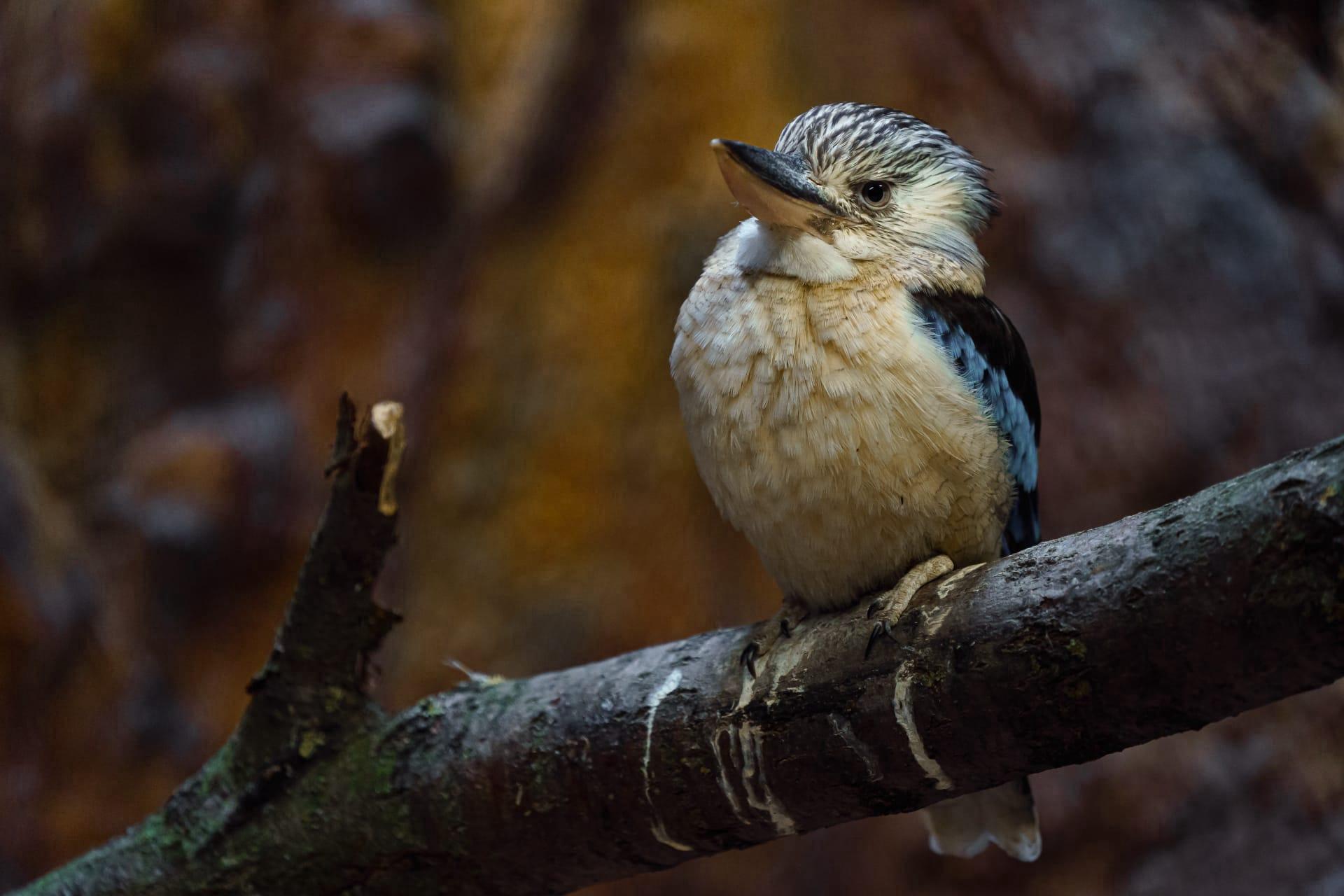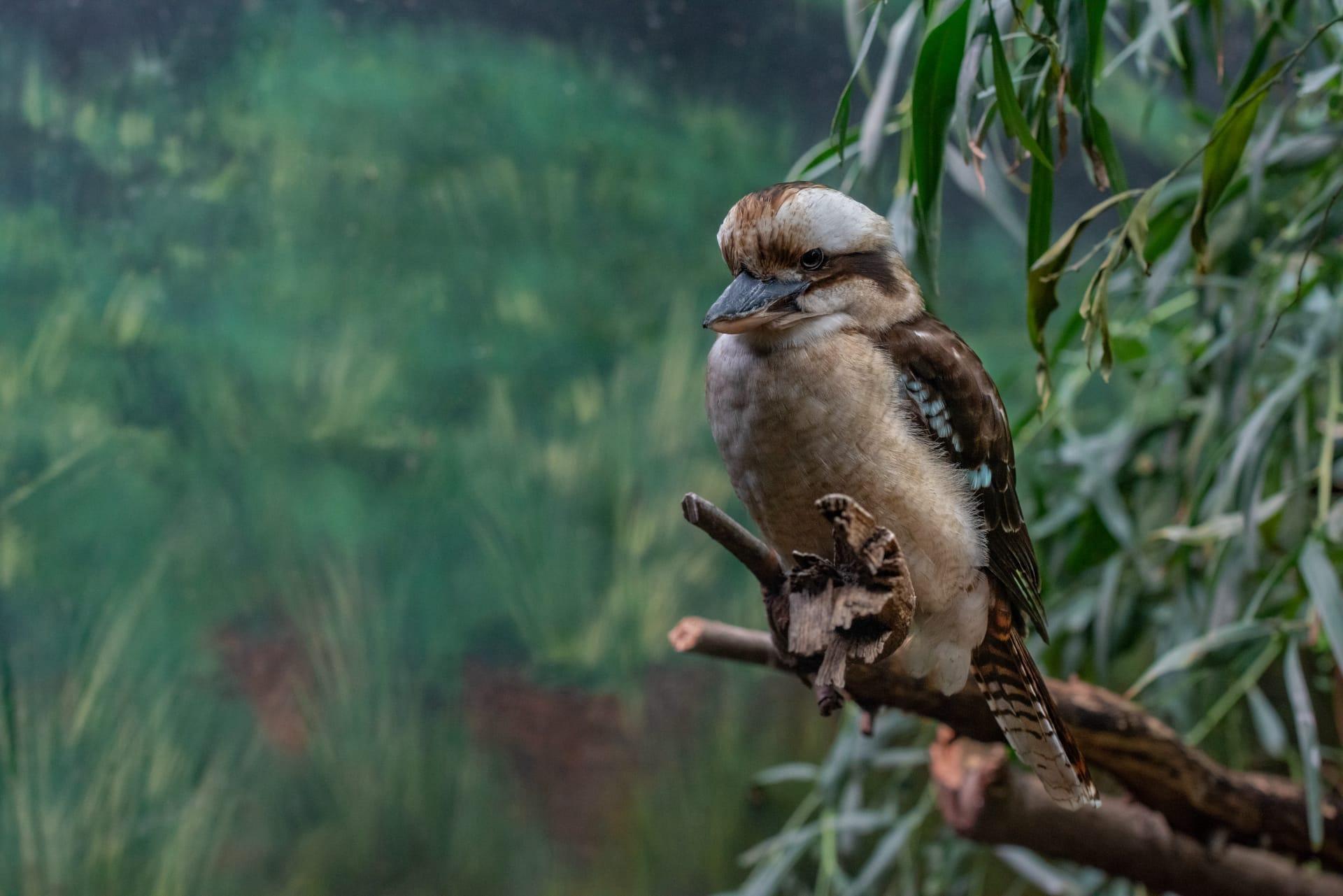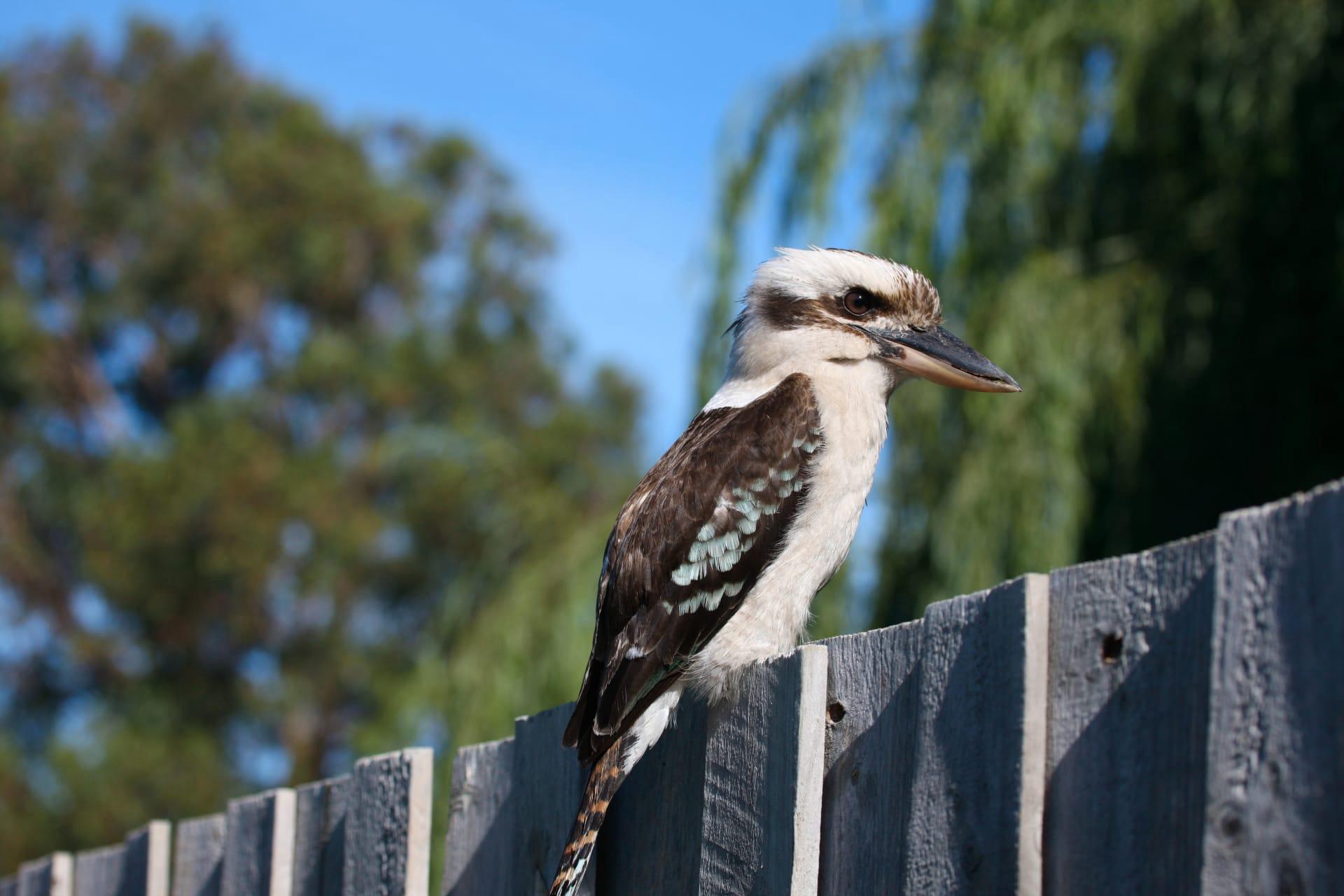1
Kookaburras, iconic birds native to Australia, are renowned for their distinctive call, which remarkably resembles human laughter. This laughter-like call is typically heard at dawn and dusk, earning them the nickname "bushman's clock." Their vocal performance, a mixture of chuckles, hoots, and other assorted trills, isn't just for amusement. Kookaburras use these sounds as a territorial call to warn off rivals. Each family of kookaburras has its unique call, which they perform in unison to establish their area. What's intriguing is the distance this call can cover, spanning up to half a mile, making it a powerful communication tool in the dense Australian forests.
Kookaburras are carnivorous, feeding primarily on small mammals, insects, snakes, and other small reptiles. Their hunting technique is rather unique. They perch silently on a tree branch and wait patiently, sometimes for hours, to spot their prey. Once they do, they swoop down with impressive accuracy and grab their meal with their strong beak. They're known to bash their prey against a rock or branch to kill it before swallowing it whole. This method is particularly useful when dealing with snakes or large insects, ensuring the prey is not a threat when consumed. The kookaburra's diet plays a crucial role in controlling the population of venomous snakes in the areas they inhabit.

2
The kookaburra's beak is not just a weapon but a versatile tool. It's about four inches long and remarkably strong, capable of exerting immense pressure. This feature is vital for their survival in the wild, where breaking into the tough exterior of insects or small reptiles is necessary. This beak is also used for digging in search of food, and in the construction of their nests, which are often found in natural or excavated hollows in trees. Interestingly, kookaburras are known to use their beaks to "laugh" as part of their territorial call.
Another fascinating aspect of kookaburras is their monogamous nature. They are known to form lifelong pairs, a rarity in the bird world. These pairs share a profound bond and work together in raising their young, hunting, and protecting their territory. This partnership is a crucial element of their survival, as it ensures a stable and supportive environment for their offspring. The young kookaburras stay with their parents for several years, learning essential survival skills before venturing out to establish their own territories.

3
Kookaburras have a unique adaptation in their eyes that allows them to see clearly both at night and during the day. Their eyes have a high number of rod cells, which are more sensitive to light and motion, making them excellent hunters in various lighting conditions. This adaptation is particularly useful during twilight hours when their laughter-like call is most often heard, and prey is abundant.
Unlike many other bird species, kookaburras do not migrate. They are sedentary birds, meaning they stay in the same habitat throughout the year. Their habitat typically consists of open forests or woodlands in Australia and New Guinea. Kookaburras have also adapted well to human-altered landscapes and can often be found in suburban areas, where they are known to steal meat from barbecues, showcasing their opportunistic and adaptable nature.

4
Kookaburras are part of the kingfisher family, but unlike their relatives, they are not commonly found near water. This divergence in habitat preference is quite unique among kingfishers. Kookaburras have adapted to a terrestrial life, hunting on land and nesting in tree hollows. This adaptation showcases the evolutionary versatility of the kingfisher family, with the kookaburra as a prime example of a species thriving in a non-aquatic environment.
Despite their cheerful and comedic reputation, kookaburras play a crucial role in the ecosystem as controllers of insect and small vertebrate populations. Their presence helps maintain a balance in the ecosystem, preventing overpopulation of certain species. This role extends beyond just hunting; their laughter-like call can also scare off smaller birds and animals, indirectly influencing the ecological balance in their habitat.

5
Kookaburras have a unique social structure within their family groups. They live in small communal groups, usually consisting of a dominant breeding pair and their offspring from previous years. These offspring, instead of setting out on their own, stay with their parents to help raise their younger siblings. This cooperative breeding behavior is a key element in their survival, as it ensures a high survival rate for the chicks.
The kookaburra's feathers do not have the waterproofing oils found in many other birds. This lack of oil means they don't have the same sleek appearance as other birds, especially in wet conditions. However, this feature has its advantages